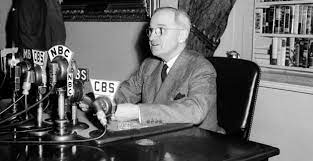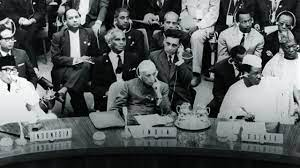Easter Rebellion begins
On April 24, 1916, on Easter Monday in Dublin, the Irish Republican Brotherhood, a secret organization of Irish nationalists led by Patrick Pearse, launches the so-called Easter Rebellion, an armed uprising against British rule. Assisted by militant Irish socialists under James Connolly, Pearse and his fellow Republicans rioted and attacked British provincial government headquarters across Dublin and seized the Irish capital’s General Post Office.
Following these successes, they proclaimed the independence of Ireland, which had been under the repressive thumb of the United Kingdom for centuries, and by the next morning were in control of much of the city. Later that day, however, British authorities launched a counteroffensive, and by April 29 the uprising had been crushed. Nevertheless, the Easter Rebellion is considered a significant marker on the road to establishing an independent Irish republic.
Following the uprising, Pearse and 14 other nationalist leaders were executed for their participation and held up as martyrs by many in Ireland. There was little love lost among most Irish people for the British, who had enacted a series of harsh anti-Catholic restrictions, the Penal Laws, in the 18th century, and then let 1.5 million Irish starve during the Potato Famine of 1845-1852. Armed protest continued after the Easter Rebellion and in 1921, 26 of Ireland’s 32 counties won independence with the declaration of the Irish Free State. The Free State became an independent republic in 1949. However, six northeastern counties of the Emerald Isle remained part of the United Kingdom, prompting some nationalists to reorganize themselves into the Irish Republican Army (IRA) to continue their struggle for full Irish independence.
In the late 1960s, influenced in part by the U.S. civil rights movement, Catholics in Northern Ireland, long discriminated against by British policies that favored Irish Protestants, advocated for justice. Civil unrest broke out between Catholics and Protestants in the region and the violence escalated as the pro-Catholic IRA battled British troops. An ongoing series of terrorist bombings and attacks ensued in a drawn-out conflict that came to be known as “The Troubles.” Peace talks eventually took place throughout the mid- to late 1990s, but a permanent end to the violence remained elusive. Finally, in July 2005, the IRA announced its members would give up all their weapons and pursue the group’s objectives solely through peaceful means. By the fall of 2006, the Independent Monitoring Commission reported that the IRA’s military campaign to end British rule was over.
ART, LITERATURE, AND FILM HISTORY
1800
Library of Congress established
President John Adams approves legislation to appropriate $5,000 to purchase “such books as may be necessary for the use of Congress,” thus establishing the Library of Congress. The first books, ordered from London, arrived in 1801 and were stored in the U.S. Capitol, the library’s first home. The first library catalog, dated April 1802, listed 964 volumes and nine maps. Twelve years later, the British army invaded the city of Washington and burned the Capitol, including the then 3,000-volume Library of Congress.
MIDDLE EAST
1980
Iran hostage rescue mission ends in disaster
On April 24, 1980, an ill-fated military operation to rescue the 52 American hostages held in Tehran ends with eight U.S. servicemen dead and no hostages rescued. With the Iran Hostage Crisis stretching into its sixth month and all diplomatic appeals to the Iranian government ending in failure, President Jimmy Carter ordered the military mission as a last ditch attempt to save the hostages. During the operation, three of eight helicopters failed, crippling the crucial airborne plans. The mission was then canceled at the staging area in Iran, but during the withdrawal one of the retreating helicopters collided with one of six C-130 transport planes, killing eight service members and injuring five. The next day, a somber Jimmy Carter gave a press conference in which he took full responsibility for the tragedy. The hostages were not released for another 270 days.
GREAT BRITAIN
1953
Winston Churchill knighted
Winston Leonard Spencer Churchill, the British leader who guided Great Britain and the Allies through the crisis of World War II, is knighted by Queen Elizabeth II on April 24, 1953. Born at Blenheim Palace in 1874, Churchill joined the British Fourth Hussars upon his father’s death in 1895. During the next five years, he enjoyed an illustrious military career, serving in India, the Sudan, and South Africa, and distinguishing himself several times in battle. In 1899, he resigned his commission to concentrate on his literary and political career and in 1900 was elected to Parliament as a Conservative MP from Oldham. In 1904, he joined the Liberals, serving in a number of important posts before being appointed Britain’s First Lord of the Admiralty in 1911, where he worked to bring the British navy to a readiness for the war he foresaw.
U.S. PRESIDENTS
1945
President Truman is briefed on Manhattan Project
President Harry S. Truman learns the full details of the Manhattan Project, in which scientists are attempting to create the first atomic bomb, on April 24, 1945. The information thrust upon Truman a momentous decision: whether or not to use the world’s first weapon of mass destruction. America’s secret development of the atomic bomb began in 1939 with then-President Franklin Roosevelt’s support. The project was so secret that FDR did not even inform his fourth-term vice president, Truman, that it existed. (In fact, when Truman’s 1943 senatorial investigations into war-production expenditures led him to ask questions about a suspicious plant in Minneapolis, which was secretly connected with the Manhattan Project, Truman received a stern phone call from FDR’s secretary of war, Harry Stimson, warning him not to inquire further.)
ART, LITERATURE, AND FILM HISTORY
1982
Jane Fonda’s first workout video released
Hollywood royalty, Oscar-winning actress, anti-war activist. Jane Fonda fit all of these descriptions by the late 1970s and 1980s, when she emerged in her latest incarnation: exercise guru. On April 24, 1982, Fonda extended her reach into the home-video market with the release of Workout, the first of her many bestselling aerobics tapes.
SPACE EXPLORATION
1967
Soviet cosmonaut Vladimir Komarov killed when parachute fails to deploy
On April 24, 1967, Soviet cosmonaut Vladimir Komarov is killed when his parachute fails to deploy during his spacecraft’s landing. Komarov was testing the spacecraft Soyuz I in the midst of the space race between the United States and the Soviet Union. Earlier in 1967, the U.S. space program had experienced its own tragedy. Gus Grissom, Edward White and Roger Chafee, NASA astronauts in the Apollo program, were killed in a fire during tests on the ground.
COLD WAR
1955
The Bandung Conference concludes
The Afro-Asian Conference—popularly known as the Bandung Conference because it was held in Bandung, Indonesia—comes to a close on this day. During the conference, representatives from 29 “non-aligned” nations in Africa, Asia, and the Middle East met to condemn colonialism, decry racism and express their reservations about the growing Cold War between the United States and the Soviet Union.
CIVIL WAR
1863
Union issues conduct code for soldiers
The Union army issues General Orders No. 100, which provided a code of conduct for Federal soldiers and officers when dealing with Confederate prisoners and civilians. The code was borrowed by many European nations, and its influence can be seen on the Geneva Convention.









Comments
Post a Comment